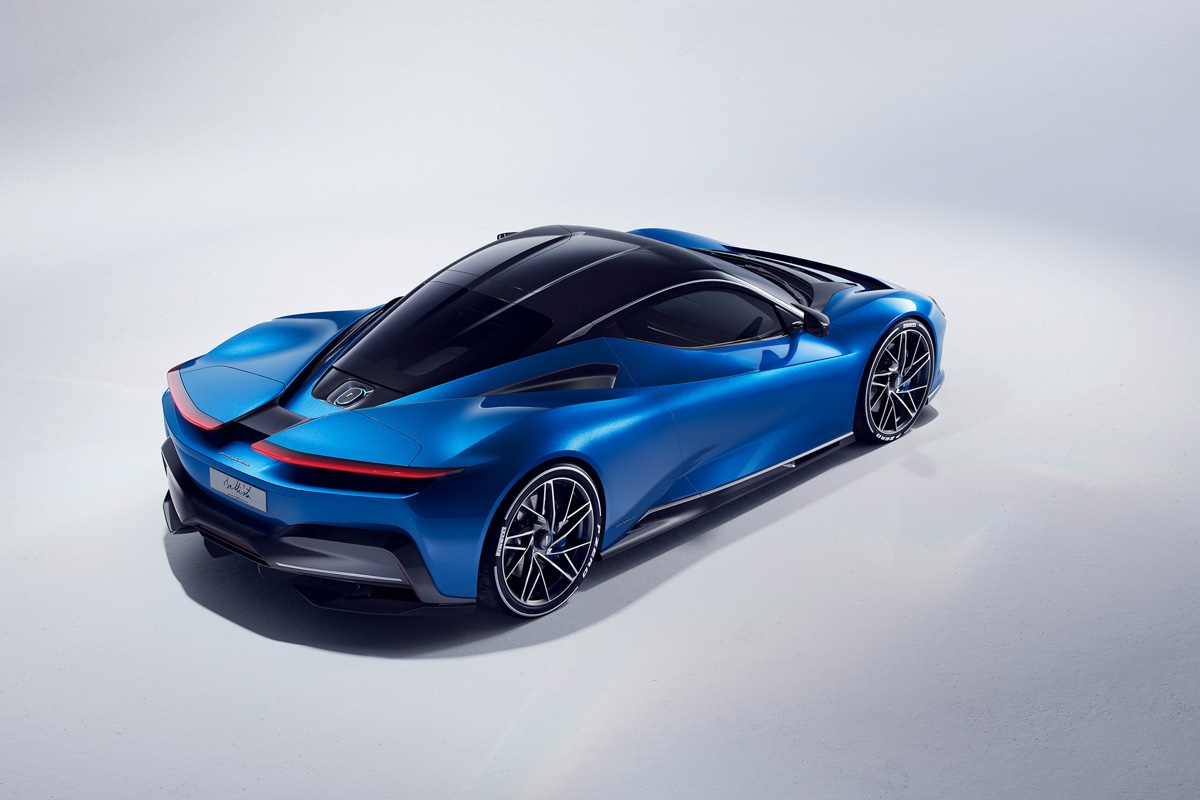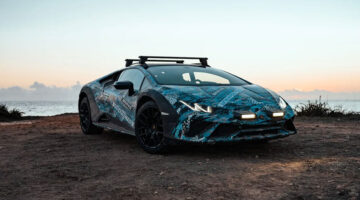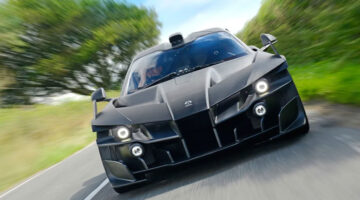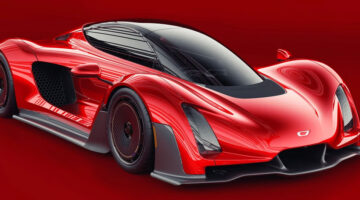1873bhp electric supercar combines Italian couture design with Rimac-sourced electric hypercar underpinnings
Automobili Pininfarina has revealed an all-new, all-electric hypercar called the Battista. Underneath the svelte, and typically Italian
To start with, the Battista is based on a carbonfibre chassis borrowed from Croatian electric hypercar manufacturer Rimac. The electric motors, capacitors and batteries are also sourced from there, but although the tech is shared, Pininfarina has done lots of work to ensure that its vision of the Battista remained pure. As a result, Pininfarina did significant work on the Battista’s overall proportions, moving the windscreen forward by 180mm, giving it a more traditional Italian mid-engined supercar silhouette.
Two electric motors are mounted to each axle, and each powering a specific wheel giving the Battista full torque vectoring capability without the need for heavy and complex differentials. As mentioned above, total power is rated 1873bhp, with a staggering 1697lb ft of torque available at a standstill, enabling the Battista to hit 100kph in ‘under 2 seconds’ and 300kph in under 12 seconds. Pininfarina quote an estimated top speed of 350kph.

The battery pack itself is not of the increasingly popular skateboard variety, rather it’s a T-shaped unit that sits behind the driver compartment and runs between the two seats. The main benefit is being able to maintain an ultra-low driving position, as well as keeping more of the mass towards the centre of the car. The 120kWh battery pack should enable a potential range of up to 450 kilometres from a single charge.
If there was a single element that played to Pininfarina’s strengths, it would of course be design, and the Battista does not disappoint in this regard. The traditional mid-engined silhouette is correct and present, and is wrapped with a considered, subtle and sophisticated body that is dripping with appeal. The most dynamic and interesting element is the massive delta-wing motif, that runs over the tight rear haunches and informs the rear styling and floating wings that also house the tail lights. This section also holds the Battista’s active rear wing, which is the only piece of active aero on the car.
The interior is dominated by a pair of touch screen flanking steering wheel, with designers focusing on a level of symmetry from the driver’s perspective, rather than the interior as a whole. Specific trims and finishes are able to be specified to the owner’s taste, and as suspected, is a strictly two-seater interior.
We then approach the small issue of price. Automobili Pininfarina is quoting a cost of somewhere between $2.2-2.7m, to start. This price-point puts it above even the usual hypercar space operated in or around $1.3m, and straight into the territory of the Bugatti Chiron. That’s a car which not only appeals on design, performance and
This article originally appeared at evo.co.uk
Copyright © evo UK, Dennis Publishing




